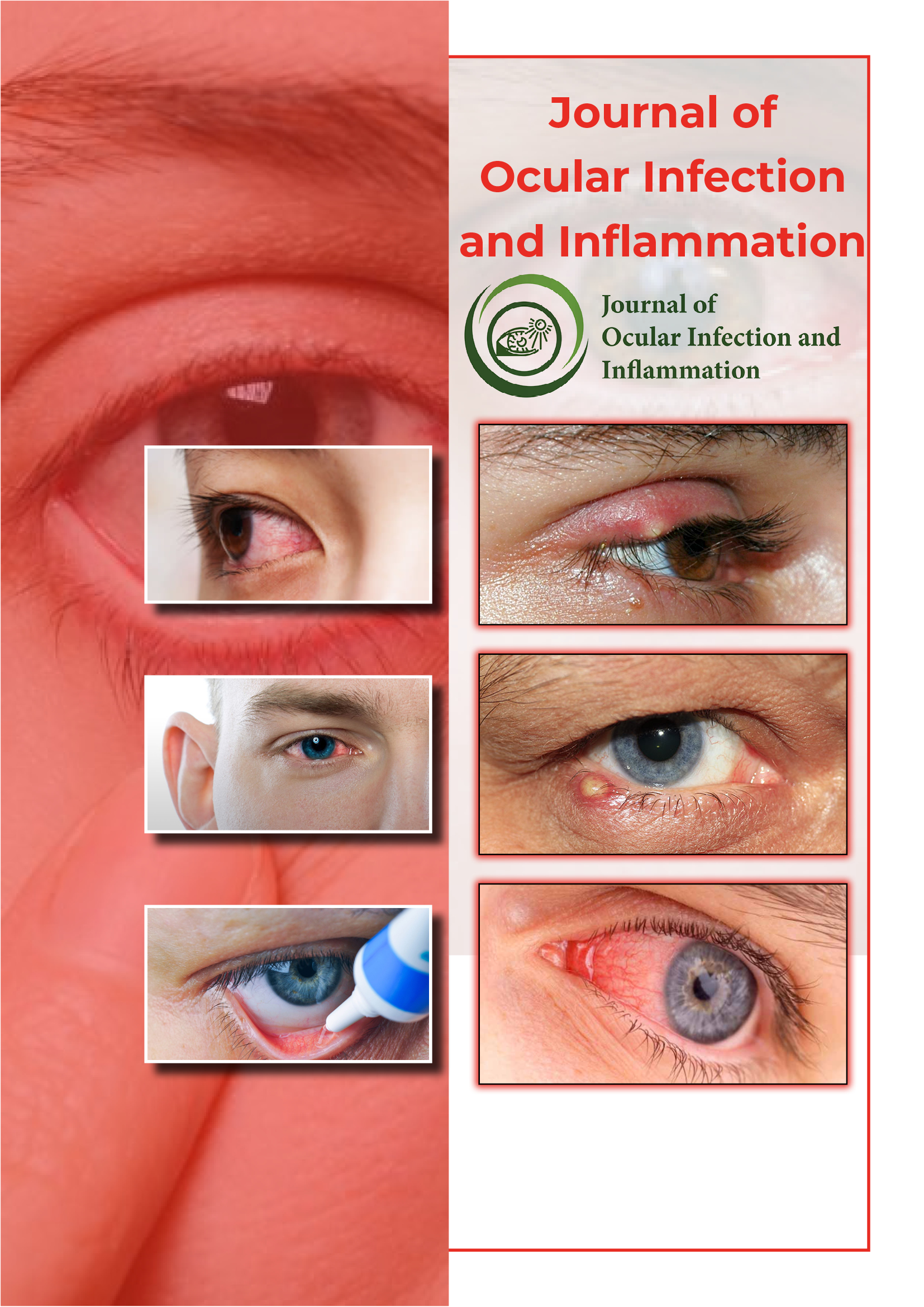Useful Links
Share This Page
Journal Flyer

Open Access Journals
- Agri and Aquaculture
- Biochemistry
- Bioinformatics & Systems Biology
- Business & Management
- Chemistry
- Clinical Sciences
- Engineering
- Food & Nutrition
- General Science
- Genetics & Molecular Biology
- Immunology & Microbiology
- Medical Sciences
- Neuroscience & Psychology
- Nursing & Health Care
- Pharmaceutical Sciences
Perspective - (2024) Volume 5, Issue 1
Managing Ocular Inflammation in Anti-VEGF Therapy: Perspectives and Innovations
Heng Bao*Received: 26-Feb-2024, Manuscript No. JOII-24-25617; Editor assigned: 28-Feb-2024, Pre QC No. JOII-24-25617 (PQ); Reviewed: 13-Mar-2024, QC No. JOII-24-25617; Revised: 20-Mar-2024, Manuscript No. JOII-24-25617 (R); Published: 27-Mar-2024, DOI: 10.35248/JOII.24.05.121
Description
Ocular inflammation presents a significant challenge in the area of anti-Vascular Endothelial Growth Factor (anti-VEGF) treatments, complicating the management of retinal diseases such as Age-related Macular Degeneration (AMD) and Diabetic Retinopathy (DR). This article explores the complex exchange between anti-VEGF therapy and ocular inflammation, its primary mechanisms, clinical symptoms, management strategies, and developing approaches to minimize risks and optimize patient care.
Mechanisms of ocular inflammation
While anti-VEGF agents, including ranibizumab, aflibercept, and bevacizumab, effectively target VEGF-mediated angiogenesis and vascular permeability, they can also cause inflammatory responses within the eye. Proposed mechanisms of inflammation include direct immune activation, dysfunction of the complement system, and disturbance of ocular homeostasis. These processes contribute to the development of anterior chamber inflammation, vitritis, Cystoid Macular Edema (CME), among other symptoms.
Clinical presentation and diagnosis
Ocular inflammation associated with anti-VEGF therapy presents a spectrum of clinical manifestations, ranging from mild discomfort to severe vision loss complications. Diagnosis typically involves a comprehensive ophthalmic examination, including evaluation of visual clarity, slit-lamp biomicroscopy, intraocular pressure measurement, and fundus evaluation. Ancillary tests such as Optical Coherence Tomography (OCT) and fluorescein angiography help in identifying inflammationrelated changes and guiding management decisions.
Management strategies
Effective management of ocular inflammation necessitates a customized approach guided by symptom severity and clinical findings. Mild cases may warrant observation with close monitoring, while more severe presentations may require intervention. Topical corticosteroids represent the fundamental of treatment for anterior chamber inflammation, with Nonsteroidal Anti-Inflammatory Drugs (NSAIDs) playing a role in managing CME. In resistant cases, periocular or intraocular corticosteroid injections, as well as therapies targeting the immune system, may be considered. Prompt recognition and management are essential to prevent vision loss and optimize treatment outcomes.
Strategies to minimize ocular inflammation
In recent years, efforts have been ongoing to develop novel strategies aimed at reducing inflammation associated with anti- VEGF therapy. These include the development of alternative anti-VEGF agents with improved safety profiles, targeted drug delivery systems for controlled and sustained release, additional anti-inflammatory therapies, and customized medicine approaches controlling pharmacogenomics and biomarker research. By combining these innovative strategies into clinical practice, clinicians can improve the safety and effectiveness of anti-VEGF treatments while minimizing the risk of inflammation-related complications.
The impact of Anti-VEGF therapy on visual outcomes
Patients treated with any of the three anti-VEGF agents more often experienced improved vision compared to those receiving control interventions. Furthermore, anti-VEGF agents have been documented to minimize the risk of vision loss in patients with retinal diseases by targeting fundamental pathological mechanisms such as fluid accumulation and ischemia. Longterm studies have demonstrated the ability of anti-VEGF therapy to preserve visual function and prevent irreversible vision loss, thus improving the overall prognosis for affected individuals. Additionally, participants treated with anti-VEGF agents were less likely to experience a decline in vision compared to those receiving control interventions, highlighting the protective effect of these drugs against severe visual impairment.
In conclusion, ocular inflammation represents a significant challenge in the management of retinal diseases treated with anti-VEGF therapy. Understanding the mechanisms, clinical presentation, and management strategies associated with inflammation is essential for providing high-quality care to patients. Moreover, the development of advancing techniques to minimize ocular inflammation shows potential in optimizing treatment outcomes and improving patient safety. As these approaches continue to evolve, ongoing research and clinical trials will be essential to validate their efficacy, safety, and long-term outcomes. In the final analysis, by navigating the complexities of ocular inflammation, clinicians can improve the efficacy and safety of anti-VEGF therapy and improve visual outcomes for patients with retinal diseases.
Citation: Bao H (2024) Managing Ocular Inflammation in Anti-VEGF Therapy: Perspectives and Innovations. J Ocul Infec Inflamm. 05:121.
Copyright: © 2024 Bao H. This is an open-access article distributed under the terms of the Creative Commons Attribution License, which permits unrestricted use, distribution, and reproduction in any medium, provided the original author and source are credited.

